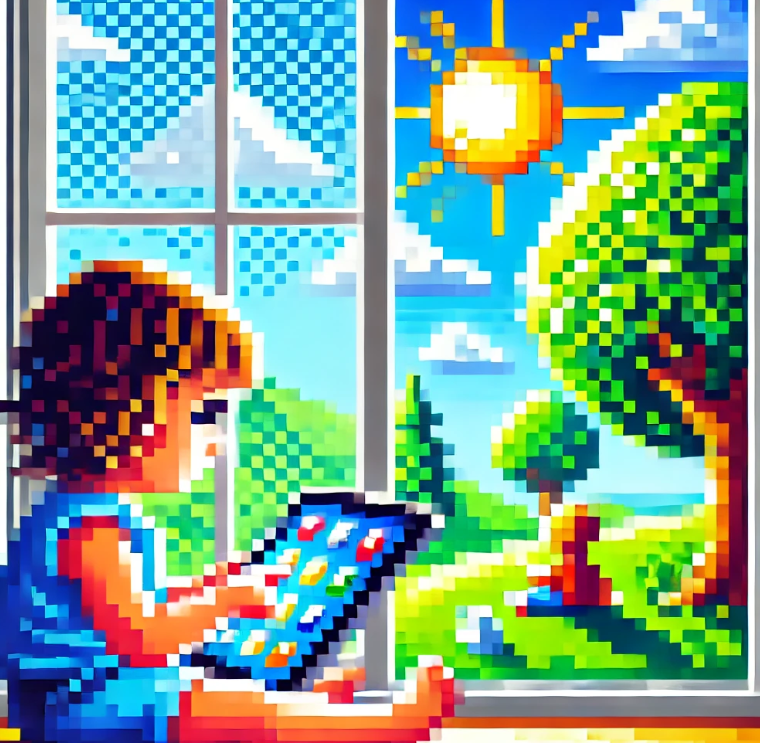
The Screen Time Dilemma
When you think about the critical years of a child’s life, the preschool period often stands out as a time of growth, exploration, and foundational learning. But in today’s tech-driven world, an often overlooked yet crucial aspect of early childhood development is the impact of screen time and outdoor activities on physical health.
A recent study out of Guangdong Province, China, sheds light on this very issue, revealing the intricate connections between family socioeconomic status (SES), screen time, and outdoor play in shaping the health of young children.
The Digital Age’s Impact on Our Little Ones
As screens become ubiquitous in our daily lives, preschoolers are not spared from the allure of digital entertainment. Whether it’s cartoons on a tablet, educational games on a smartphone, or videos on TV, screen time is increasingly filling up young children’s waking hours. But what does this mean for their health?
The study, involving nearly 24,000 preschoolers, found that many children in China are falling short of the World Health Organization’s (WHO) recommendations for screen time and outdoor activities. This trend is particularly concerning given that the habits formed during these early years can set the stage for lifelong health patterns. Preschoolers today, especially those from families with lower SES, are at a higher risk of spending excessive time in front of screens and not enough time playing outside—behaviors that are linked to increased rates of obesity and myopia.
Socioeconomic Status: A Hidden Influencer
One of the study’s standout findings is the powerful role that family SES plays in a child’s daily habits. Children from higher SES families tend to spend less time in front of screens and more time engaged in outdoor activities. This difference isn’t just about lifestyle choices—it’s about access to resources, education, and awareness.
For example, higher SES families might have the financial means to enroll their children in organized outdoor activities, provide safer outdoor environments, or prioritize educational activities that don’t involve screens. Conversely, families with lower SES may face more constraints, such as limited access to safe outdoor spaces, less time to supervise outdoor play due to work commitments, or reliance on screens as a convenient way to keep children occupied.
This disparity highlights the need for public health interventions that are tailored to different socioeconomic contexts. Simply advising parents to reduce screen time might not be enough; we need to ensure that all families have the resources and support to implement these changes.
The Gender Divide
Another intriguing aspect of the study is the gender difference in how preschoolers spend their time. Boys, on average, spend more time playing outside than girls, yet they are also more likely to be overweight. Girls, on the other hand, tend to have better overall health outcomes despite spending less time outdoors. This could be due to various factors, including differences in play styles, dietary habits, or even how physical activity is perceived and encouraged among boys versus girls.
These findings suggest that health interventions should consider gender differences and aim to promote outdoor activities that appeal to both boys and girls. Encouraging balanced, active lifestyles from a young age is key to preventing health issues down the line.
The Screen Time Conundrum
Perhaps the most significant takeaway from the study is the clear link between screen time and negative health outcomes. The more time preschoolers spend in front of screens, the more likely they are to have lower health scores and a higher risk of being overweight. This relationship is particularly strong among children from high SES families, who, despite their advantages, are not immune to the health risks associated with excessive screen use.
This isn’t just about cutting down screen time; it’s about replacing it with activities that promote physical health. Outdoor play, in particular, was found to be a strong predictor of better health outcomes. The simple act of playing outside—whether it’s running, climbing, or just exploring—can significantly boost a child’s physical well-being.
The Way Forward: Turning Insights into Action
So, what can we do with this information? For public health practitioners and researchers, these findings are a call to action. The disparities in screen time and outdoor activities across different SES groups highlight the need for targeted interventions that address the specific needs and challenges of each group.
Programs aimed at reducing screen time should not only focus on educating parents about the risks but also on providing practical alternatives. This could mean creating more safe, accessible outdoor spaces in lower SES communities, offering free or low-cost outdoor activities, or developing community programs that encourage physical play.
Moreover, addressing the gender gap in outdoor activities could involve promoting more inclusive forms of play that appeal to all children, regardless of gender. This might involve community initiatives that engage children in group activities, sports, or nature exploration that are both fun and beneficial for their health.
Join the Conversation
Now that you’ve read about the impact of screen time and outdoor activities on preschoolers, we want to hear from you:
- How has screen time affected the health and well-being of children in your life?
- What strategies have you found effective in encouraging outdoor play for young children?
Share your thoughts in the comments below or join the discussion on social media. Let’s work together to create healthier, happier futures for our kids.
Conclusion: A New Era of Play
As we move forward in this digital age, it’s clear that we need to strike a balance between the benefits of technology and the need for physical activity. The study from Guangdong Province serves as a powerful reminder that the habits we help our children develop today will shape their health and well-being for years to come. By understanding the complex relationships between screen time, outdoor play, and socioeconomic factors, we can create targeted, effective interventions that ensure all children have the opportunity to lead healthy, active lives.
Be Part of the Change – Get Weekly Updates!
Stay informed and connected. Subscribe for free and share this blog to make a difference in public health with others. If you liked this blog, please share it! Your referrals help This Week in Public Health reach new readers.



